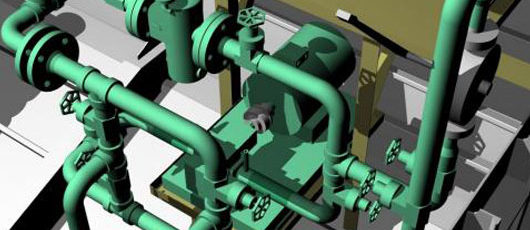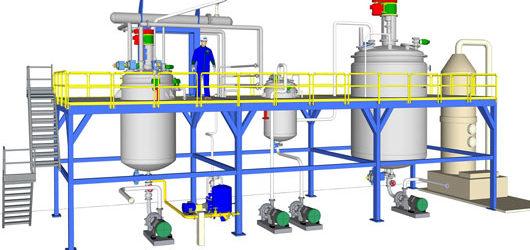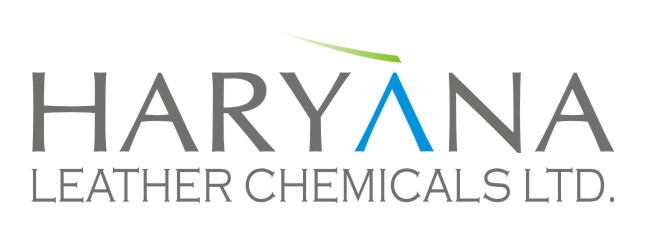Haryana has a legacy of innovation, leadership and action in sustainability. As we look ahead, we are committed to going beyond our current reach on our products and solutions. Haryana’s commitment to sustainability goes beyond statutory regulations by setting a higher bar for social and environmental progress.
We reach for products, processes and strategies at the intersections of the sciences by clearly defining our sustainability goals. We encourage candid conversations about product safety, safety at workplace, and transparency in operations with our employees, partners, customers and the public in general.
Sustainability Goals
Valuing Water:
Haryana collaborated with its employees and environmental experts to embark on a game-changing program on minimisation of waste water. Recent Successes: In the past five years there has been 500% reduction of waste water due to process optimisation. In 2017 Haryana became the first chemical manufacturer in the state to achieve a Zero Liquid Discharge (ZLD) Status. More than 75% of waste water, after primary treatment, is made fit for reuse in spray drying process. The remaining water is treated under the state- of- the –art separation process using MVR (mechanical vapour recompression). MVR ensures separation of contaminants using minimum energy.

The goals for 2025 revolve around drawing lesser water from the ground and increase reliance on harvested rain water.
Valuing Environment:
Together with the academia and industry experts, Haryana revamped powder material handling and transfer processes to reduce powder spills and fumes at workplace.
Recent Successes: Using vacuum based Powder transfer systems (PTS), Haryana achieved a milestone in powder handling. The new PTS with electronically timed valves conveys powders to reactors in a completely contained environment –yielding a spill free workplace. All spray drying equipment have been coupled with highly efficient Cyclone Dust Separators and Pulse Bag Filters to ensure that even minor traces of dust or process powder do not escape in the environment.

The goals for 2025, address small quantity powder dosing and transfers that are still done manually.

The goals for 2025, address small quantity powder dosing and transfers that are still done manually.
Valuing Environment:
Together with the academia and industry experts, Haryana revamped powder material handling and transfer processes to reduce powder spills and fumes at workplace.
Recent Successes: Using vacuum based Powder transfer systems (PTS), Haryana achieved a milestone in powder handling. The new PTS with electronically timed valves conveys powders to reactors in a completely contained environment –yielding a spill free workplace. All spray drying equipment have been coupled with highly efficient Cyclone Dust Separators and Pulse Bag Filters to ensure that even minor traces of dust or process powder do not escape in the environment.
Valuing Safety:
A major focus on workplace safety has resulted in promoting a highly safe work environment and improved ambient air.
Recent successes: By installation of continuous venting and supply of fresh air, the traces of solvents and monomers have been reduced by nearly 1000% in past three years. Using thermography imaging all electrical terminals are examined for any sparking, overloading and overheating. A leading consulting company carried out compatibility study for warehousing raw materials and chemical storage tanks regularly undergo ultrasonic weld testing to detect any leakage. Extensive plantation of trees, landscape greenery has yielded a very pleasant and safe work environment and set an example for neighbouring industry and competitors.

The goals of 2025, will address material spills and use of mechanised floor and equipment cleaning.
Valuing Energy Efficiency:
Chemical industry, unfortunately, is one the largest consumer of energy and ranks second after steel. Process heating, agitators, motor-driven equipment, pumps, compressors are highly energy
intensive. The technology changes in these branches of engineering are very gradual and present huge challenges in adaptation. At Haryana, a great attention is given by top management in adopting clean fuels and a variety of practices that help prevent energy wastage.
Recent Successes: Haryana’s focus on clean fuels resulted in abandoning low cost Furnace Oil (FO), which had high sulphur content. Adoption of LEDs for general illumination, variable frequency drives
(VFD), air operated diaphragm pumps (AODD), computer controlled burners, and Computational Fluid Dynamic (CFD) analyses for agitators are some technologies that have aligned Haryana with emerging trends on energy efficiency.

Sustainability goal for 2025: Haryana is currently discussing with various vendors design for a 50 KW solar power station to meet 25% of its energy needs via renewable source. Also a viability study is under way to covert spray drying burners to Natural Gas (to replace Diesel) to reduce emission.

Sustainability goal for 2025: Haryana is currently discussing with various vendors design for a 50 KW solar power station to meet 25% of its energy needs via renewable source. Also a viability study is under way to covert spray drying burners to Natural Gas (to replace Diesel) to reduce emission.
Valuing Energy Efficiency:
Chemical industry, unfortunately, is one the largest consumer of energy and ranks second after steel. Process heating, agitators, motor-driven equipment, pumps, compressors are highly energy
intensive. The technology changes in these branches of engineering are very gradual and present huge challenges in adaptation. At Haryana, a great attention is given by top management in adopting clean fuels and a variety of practices that help prevent energy wastage.
Recent Successes: Haryana’s focus on clean fuels resulted in abandoning low cost Furnace Oil (FO), which had high sulphur content. Adoption of LEDs for general illumination, variable frequency drives
(VFD), air operated diaphragm pumps (AODD), computer controlled burners, and Computational Fluid Dynamic (CFD) analyses for agitators are some technologies that have aligned Haryana with emerging trends on energy efficiency.
Valuing Green Chemistry
The leather Industry’s journey to sustainability is in its early stages and facing huge regulatory challenges worldwide. Haryana has already established its leadership in leather industry by adopting highest international standards and regulatory requirement on use of Banned substances.
Recent successes: Haryana became the first Indian company to free its products from restricted substance as per REACH. The company has recently released a safety guide for tanners titled “Green Trek” for improving understanding on eco-labels and regulatory framework. Haryana s GREEN
FIREWALL is built around resource management, internal screening and supporting all RSL updates under REACH.

Sustainability goals for 2025: To address the issue of VOC (volatile organic compounds) and promote awareness on use of “Solvent – Free” and “Low VOC” products.
Green-Trek- a symbol of our commitment to sustainable technologies
Download our Guide on REACH / RSL / Banned Substances.
Corporate Office
1405 B, Signature Towers, South City I,
Gurgaon – 122001, Haryana, India
info@leatherchem.com
Phone : (+91)124 – 2739000
Fax : (+91)124 – 2739029
Regd. Off. & Works
72 – 77, HSIIDC Industrial Estate,
Hansi Road, Jind – 126102, Haryana, India.
Phone : (01681) 225662
 ICAP SIRA, Italy
ICAP SIRA, Italy



